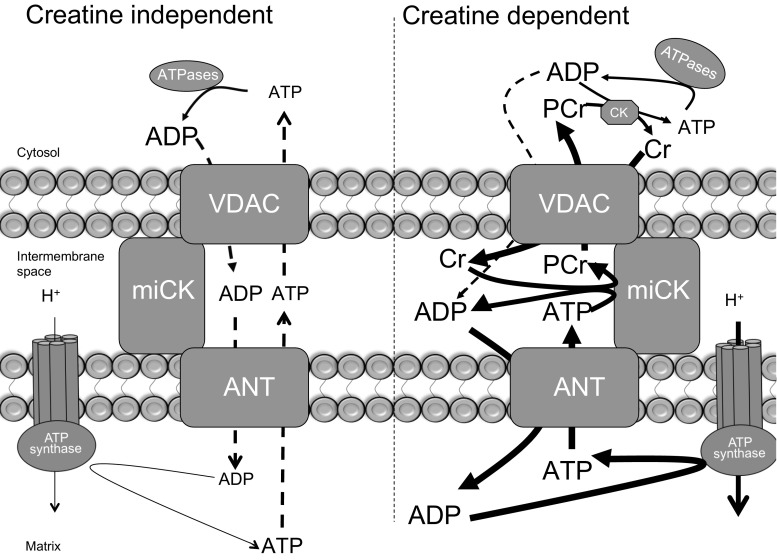Fig. 2.
Schematic of adenosine diphosphate (ADP) and adenosine triphosphate (ATP) shuttling mechanisms of energy transfer across mitochondrial membranes. In both the presence and absence of creatine (Cr), adenine nucleotide transfer is believed to occur by diffusion through a voltage-dependent anion channel (VDAC) on the outer mitochondrial membrane and an adenine nucleotide translocase (ANT) on the inner mitochondrial membrane. However, the presence of Cr enhances this transfer by essentially concentrating ADP within the intermembrane space. The availability of phosphocreatine (PCr) essentially has the opposite effect by inhibiting the mitochondrial creatine kinase (miCK) reaction. It is currently estimated that ~80% of the energy transfer from matrix to cytosol occurs through miCK-dependent phosphate shuttling [32], although no direct evidence has been generated to support this supposition
Modified slightly from Perry et al. [48]

